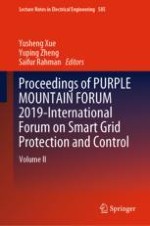This book presents original, peer-reviewed research papers from the 4th Purple Mountain Forum –International Forum on Smart Grid Protection and Control (PMF2019-SGPC), held in Nanjing, China on August 17–18, 2019. Addressing the latest research hotspots in the power industry, such as renewable energy integration, flexible interconnection of large scale power grids, integrated energy system, and cyber physical power systems, the papers share the latest research findings and practical application examples of the new theories, methodologies and algorithms in these areas. As such book a valuable reference for researchers, engineers, and university students.
